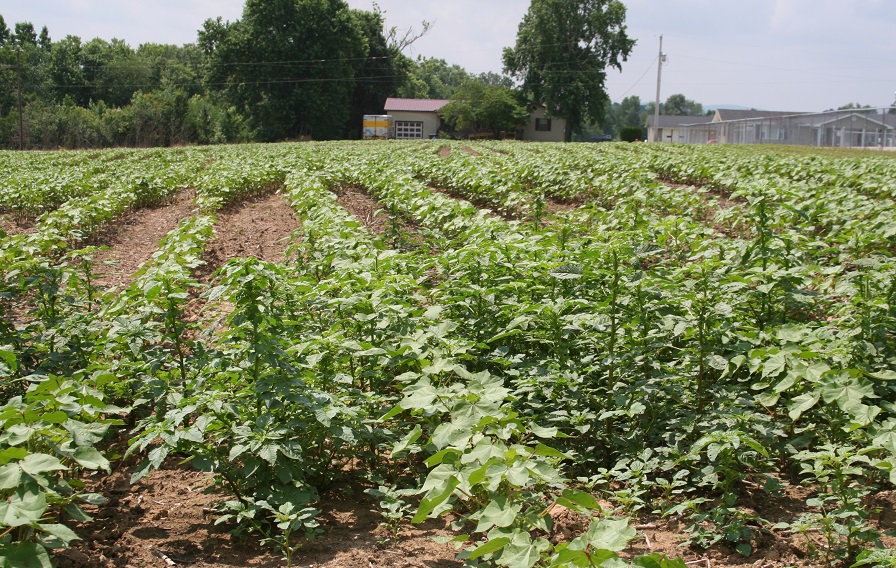Bayer Working to Meet Needs, Minimize Challenges
From Cotton Grower Magazine – November 2017
One thing is constant in the cotton market – growers want options. And when they find a variety that performs for them, it’s often difficult for them to make a change. That’s why loyalty is strong among growers who plant Bayer’s FiberMax and Stoneville brand varieties.
That, plus a lineup of products developed to perform, regardless of geography.
For example, take the northern High Plains of Texas. The regions there are quite different, primarily due to elevation, with a greater potential for early frost than in areas further south between Lubbock and Amarillo. Tim Culpepper, Bayer’s regional agronomist for the Northern High Plains, says he has several varieties that successfully fit the often harsh environment.
“We had a limited launch of FM 1888GL in 2017,” he says. “In 2016, among the growers in the region, it either came in first or second in trial locations. And what we saw last year, we’re seeing again this year across the northern regions. It looks promising as an early season variety that fits in multiple environments like FM 2011GT.”
And speaking of FM 2011GT…the six-year old variety is still doing quite well across the region. It fits dryland areas, but is also successful under irrigation. Likewise, growers who use ST 4747GLB2 in the High Plains and northern High Plains consider the early season variety one of the best in their portfolio, because it consistently performs so well.
FM 2322GL also fits the region well. It’s a mid-maturing variety with Verticillium wilt tolerance and an Acala background which provides very good fiber quality.
“North of Amarillo, FM 1320GL is almost a week earlier than any other variety,” says Culpepper. “It was one or our top selling varieties this year, and it was all concentrated in that area. Growers know how to manage it. They put it with their heavier irrigation and nitrogen environment. And, in case we are a little behind like we are this year, this variety will still mature and have good mic quality and good yield.”
South of Amarillo, Culpepper’s key variety is FM 1911GLT, a sister line to FM 2011GT. Verticillium wilt is a major issue in this area, and FM 1911GLT provides Verticillium tolerance and resistance to other diseases while adding improved fiber quality.
Culpepper notes that varieties with disease resistance are important for growers in the High Plains area.
“Traditionally, we’ve always had a little bit of Verticillium wilt,” he says. “In this area, we grow a lot of cotton on cotton. We used to rotate quite heavily, but with the lack of water, it’s generally gone back to cotton. If you ever get Verticillium wilt on a piece of ground, you’re always going to have it. It’s one of the reasons we’ve spent a lot of time and effort on building tolerance into our varieties.”
Bacterial blight is also a problem in the West Texas area, and the bulk of FiberMax and Stoneville varieties provide bacterial blight tolerance. “Blight has been severe enough in the area this year that it’s going to affect some yields and quality in more susceptible varieties,” points out Culpepper. Looking ahead, the company is evaluating eight potential new varieties for Texas, including five for the High Plains, says Culpepper. Several are early and early-mid varieties with good boll load and disease packages, plus potential for yield and quality. Others are fuller season varieties, with a stronger fit in the Stoneville background.
Southern Performance
Scott Asher, Bayer Southeast regional agronomist, is excited about the performance of several Stoneville varieties in Southeast and Mid-South this year.
“We’re hearing good reports from growers about ST 4949GLT in the Mid-South,” he says. “It’s an early-to-mid variety with very high lint turnout and very high yield potential. We’re starting to get early data from the North Delta, and performance there looks very strong.
“In the Carolinas, ST 4848GLT performed very well in both on-farm and county trials in 2016,” he adds. “So far in 2017, it has looked real good.”
Asher also urged growers to keep an eye on two varieties new to the market in 2017.
ST 5020GLT performed well in the mid-Atlantic, both from an overall yield perspective and consistency, while providing very good bacterial blight resistance and high quality. ST 5517GLTP is more of a medium-to-full season variety with bacterial blight resistance and a growth pattern that fits the Southeast.
“ST 5517GLTP is our first introduction of TwinLink Plus for extra insect protection in a Stoneville brand,” says Asher. “We’re getting really good reports from our internal trials and from some grower side-by-side plots. Early reports are coming from the Mid-South. And based on what I’ve seen in Georgia, it looks very promising as well.”








